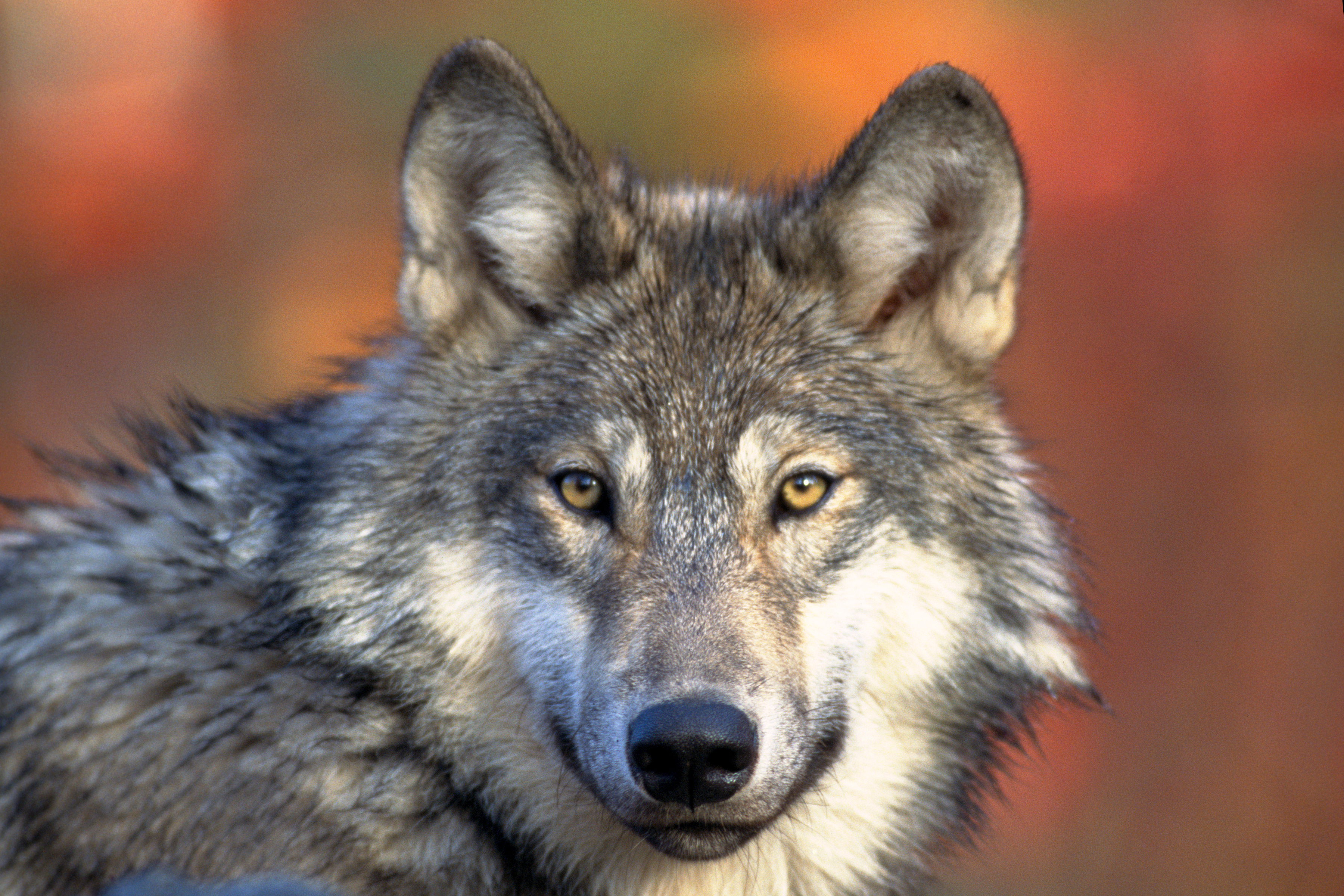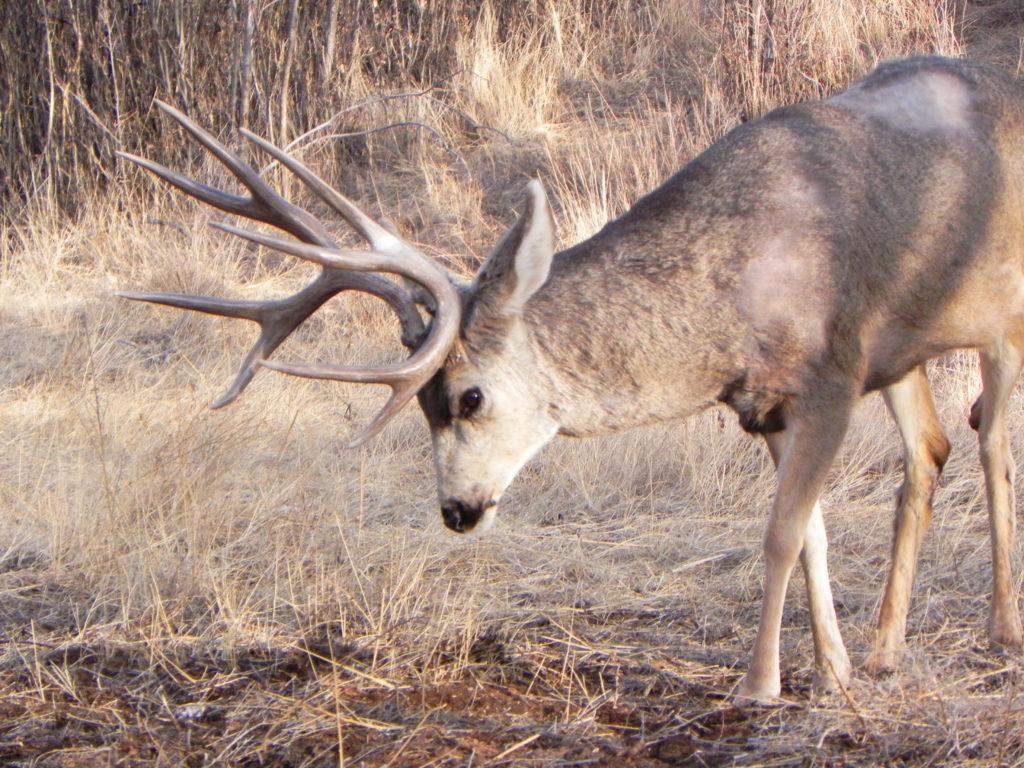
Update, 10:15 a.m.: This story has been updated to reflect recent reports of wolf sightings in Jackson County and Grand County.
Last year, Eric Washburn shot and killed a mule buck in Northern Colorado. Its thick coat and massive rack of antlers convinced him of the animal’s health, so he had the meat processed and chucked it into his freezer.
A few weeks later, a mandatory Colorado Parks and Wildlife test revealed the animal had chronic wasting disease. The deadly neurological condition was first discovered in Fort Collins, in 1967. It’s similar to mad cow disease, but affects deer, elk and moose.
Washburn had to toss his venison since there’s an outside chance CWD could someday spread to people.
“All of that beautiful meat went into the garbage rather than feeding the family for the year,” he lamented. “It just showed me you can’t tell by looks which deer are diseased and which are not.”
Wolves, however, might not have the same difficulty discerning the difference.
Since the predators hunt weak or otherwise vulnerable prey, the logic follows that they might pick off CWD-infected animals. The threat of a wolf pack could also force deer and elk into smaller herds, helping to stem the spread of the disease.
That’s one big reason why Washburn, a Steamboat Springs sportsman and conservationist, is helping the Rocky Mountain Wolf Action Fund put an initiative before Colorado voters in 2020. If successful, wildlife managers would be directed to come up with a plan to reintroduce grey wolves in Colorado “using the best scientific evidence available.” It’d also require the state to compensate livestock owners for any loses.
Supporters will need to collect 124,632 valid signatures by Dec. 13 to make the ballot.
Sportsmen are deeply divided. Some, like Washburn, think wolves could be a natural ally in the battle against chronic wasting disease. In 2018, Colorado Parks and Wildlife reported that at least 31 of Colorado’s 54 deer herds have the disease. Sixteen of the state's 43 elk herds are also infected.

While most hunters find those figures concerning, leading advocacy groups aren’t ready to enlist the wolves to combat CWD. They worry the predators could further harm ailing herds. Colorado would also be the first state where voters decide whether to reintroduce the predators, rather than wildlife managers.
“Ballot box biology is a little dangerous,” said Mark Holyoak, director of communications for the Rocky Mountain Elk Foundation. “To take this type of approach is a reckless and a really big gamble as far as what the impacts would be.”
Holyoak also likes Colorado's current plan for wolves: wait for them to arrive on their own. In 2016, the Colorado Wildlife Commission rejected a plan to reestablish gray wolves but resolved the predators should be left alone if they migrate into the state.
Recent sightings suggest that might be happening. On Monday, Colorado Parks and Wildlife announced it was working to confirm one wolf sighting in Jackson County and another in Grand County.
As for the claim that the wolves could help stem CWD, Holyoak is skeptical. He said that while it makes sense in theory, there’s no real-world evidence that the predators remove infected animals or bolster herds against the disease. Instead, what’s known is based on ecological models or circumstantial evidence, like biologists who’ve noted a lesser prevalence of CWD in areas with wolves.
“People throw it out there and just because you say something doesn’t mean it’s true,” he said. “It needs to be shown. It needs to be proven.”
CWD passes from animal to animal through prions — misfolded proteins that cause other proteins to misform around them. Holyoak notes one study which found prions remain infectious after they pass through a coyotes’ digestive system. He speculates that could mean wolves might help spread the disease, not stop it.
Matt Dunfee, who leads the Chronic Wasting Disease Alliance in Fort Collins, is more agnostic about the potential for wolves to guard against chronic wasting disease.
“Probably the fairest answer is that we don’t exactly know what it would do, but it might help,” he said.
For him, it makes intuitive sense that CWD would make deer or elk more susceptible to predators. In the disease’s final stages, infected animals stumble about with a vacant stare. Researchers have found predators like wolves and coyotes disproportionately prey on animals impaired by malnutrition or disease. Another study found mountain lions are much more likely to prey on animals infected with CWD.
Even if that’s true, Dunfee said wolves could introduce a number of other dynamics. Animals could spread out more or bunch up more. They could have more nose to nose contact, which further risks spreading the disease.
Add it all up, he thinks the public should be cautious. Wolves would bring big changes to Colorado’s ecosystems. It’s hard to say if they would fight CWD.
“I think it’s a factor to consider,” he said. “But to claim that if we add wolves back in it will positively impact the disease prevalence in wild herds? We just don’t have enough information to know that.”









